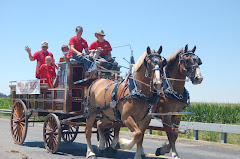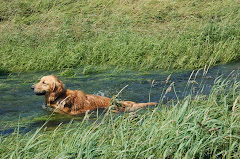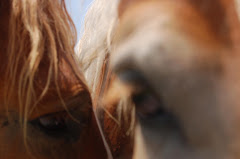The last post explained the surgical procedure of spaying. This post will explain the surgical procedure of castration. But before I explain the procedure, I'll include some information about surgery in general.




 The testicle is exteriorized (brought to the surface) through the skin incision. The spermatic cord is then ligated (tied off) to prevent bleeding and then incised to remove. The spermatic cord consists of blood vessels, the cremaster muscle (the muscle which retracts the testicle) and the vas deferens (the "tube" which carries the sperm from the testicle through the penis). These two pictures show the testicle and spermatic cord exteriorized and then ligation. Keep in mind, these are pictures of a small (9 pounds), young dog.
The testicle is exteriorized (brought to the surface) through the skin incision. The spermatic cord is then ligated (tied off) to prevent bleeding and then incised to remove. The spermatic cord consists of blood vessels, the cremaster muscle (the muscle which retracts the testicle) and the vas deferens (the "tube" which carries the sperm from the testicle through the penis). These two pictures show the testicle and spermatic cord exteriorized and then ligation. Keep in mind, these are pictures of a small (9 pounds), young dog.


Veterinary surgery is very similiar to human surgery and quite sophisticated in terms of anesthesia, monitoring and surgical instrumentation. Many of my clients express concern when their pet needs general anesthesia for a procedure. I assure them that we use very safe anesthetic agents and that their pet is connected to a cardiovascular (CV) monitor during the entire procedure. This monitor monitors the pet's ECG, heart rate, respiratory rate, blood pressure and oxygen level. This is a picture of the CV monitor.

The type of anesthetic used is a combination of injectable and gas inhalation. In other words, the pet is given an injection of sedative intravenously which enables me to place an endotracheal tube in his/her trachea through which gas anesthesia and oxygen is administered. Gas anesthesia is very safe and we are able to control the anesthetic level more accurately. This is a picture of our gas anesthetic machine.

And just like in human medicine, all our instruments are sterilized and we adhere to sterile technique during a surgery. We use a piece of equipment called an autoclave to sterilize all instruments after they have been cleaned. This is a picture of an autoclave which uses high temperative and high pressure to sterilize (kinda like a pressure-cooker).

This picture shows an instrument pack opened and ready for surgery.

Okay, on to the castration procedure.....I'm sure you are all just dying to see these pictures! Castration or orchidectomy is the surgical removal of one or both testicles. In a routine castration, we obviously remove both testicles. Unlike neutering a female, castration is not abdominal surgery.....rather, castration involves an incision made through the skin just cranial (in front of) the scrotum. This picture illustrates the skin incision.
 The testicle is exteriorized (brought to the surface) through the skin incision. The spermatic cord is then ligated (tied off) to prevent bleeding and then incised to remove. The spermatic cord consists of blood vessels, the cremaster muscle (the muscle which retracts the testicle) and the vas deferens (the "tube" which carries the sperm from the testicle through the penis). These two pictures show the testicle and spermatic cord exteriorized and then ligation. Keep in mind, these are pictures of a small (9 pounds), young dog.
The testicle is exteriorized (brought to the surface) through the skin incision. The spermatic cord is then ligated (tied off) to prevent bleeding and then incised to remove. The spermatic cord consists of blood vessels, the cremaster muscle (the muscle which retracts the testicle) and the vas deferens (the "tube" which carries the sperm from the testicle through the penis). These two pictures show the testicle and spermatic cord exteriorized and then ligation. Keep in mind, these are pictures of a small (9 pounds), young dog.

Just as the spay, the castration incision is closed in two layers. However, unlike the spay, I do not place any skin sutures in the incision. Instead, I place a subcuticular (just below the skin) layer of sutures (stitches) which are absorbable or will dissolve. I do this to prevent male dogs from chewing or pulling out their skin sutures. 

Just like spaying, I recommend castrating male dogs and cats around 4-5 months. One of the behavior benefits of castrating a male dog at a young age is it can prevent them from lifting or hiking a leg to urinate or mark territory with urine. Other health benefits of castration include preventing prostate enlargement, infection and cancer later in life. For the most part, castrated male dogs are better behaved and less aggressive.










No comments:
Post a Comment